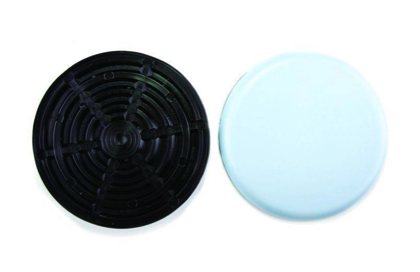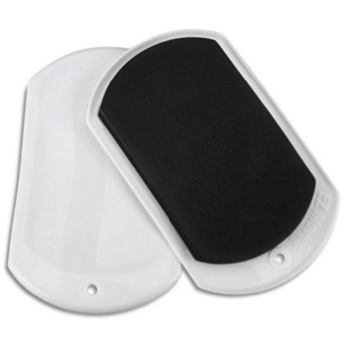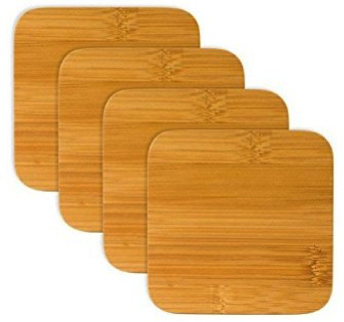Quarter Notes #20 (Volume 5, Issue 4)
- Jun 9, 2019
- 10 min read
Updated: Sep 2, 2020
Dear Get Better Sound & Through the Sound Barrier owners,
Welcome to the twentieth issue of Quarter Notes, published on February 4, 2017. Quarter Notes is a free newsletter for Get Better Sound and Through the Sound Barrier owners, expanding on both, as well as introducing new and timely subjects.
Best email address
Since you’re reading this, the e-mail address with which I sent this QNs must have worked. However, the only e-mail address I have is the one associated with your initial Get Better Sound or Through the Sound Barrier order. If you have an e-mail address that you’d prefer to use to receive Quarter Notes notifications, send it to js@getbettersound.com. Be sure to include the e-mail address I used originally, along with the one that you want to use to replace it.
EarPlanes importance
If you travel by air, you may want to consider EarPlanes. They make altitude pressure transitions more comfortable (less popping of the ears – or at least – the popping is less strong). But I always use them when I am going on a RoomPlay voicing session, or any trip that will require my hearing to be intact, to reduce the effects of air travel – both pressure changes, as well as noise reduction.

You need to insert them just prior to take-off. The instructions say that you can remove them when at cruising altitude, as long as you reinsert them prior to reducing altitude. I’ve not done it (remove them mid-flight), so I cannot say for certain how that works, but I believe the manufacturer has to know, or they wouldn’t say it was OK.
If you value your hearing, especially for acoustically-related events that happen soon after you arrive from your flight (such as attending an audio show), EarPlanes get the job done. If you do not know where to find them, they are typically available at most pharmacies and airports, as well as at Amazon.
There is a new model available – ep2. I have not tried it yet. The standard earplanes have been my choice for a number of years.
IBE - Irrational, but Efficacious
Yes, I have mentioned it before, but this CD from Cardas/Ayre Acoustics - especially Cut 7 - continues to amaze. Long ago I imported it into my music files on my computer.
I have no clue as to why it works – but here’s what happens each time I use it:
Musical detail and natural musical flow is noticeably better. This is not something only a few golden ears can hear – IMO, anyone can hear it. For example, something as simple as the sound of a choir taking a collective breath between or before certain musical passages is unmistakable, when previously it was barely noticeable.
I don’t use this cut every day. But I do use it prior to a RoomPlay Reference session, or at a show, etc…
You do NOT need to play it loudly. I run mine at about half my typical playback volume. I do use it after a week or so of personal listening (I don’t mean continuous listening – just typical use over a week).
Back when I was doing those CES shows as the North American Avantgarde Acoustics distributor, each morning I ran IBE (cut 7) just prior to opening the doors. Now I am NOT saying that the IBE disc was the reason we won all those “Best of Show” awards, but I will say that – IMO – it definitely helped…
I’ve not tried the LP, but strongly suspect it works there as well.
Copper articles - and time required
Many of you have commented on the series of articles I have been submitting for PS Audio’s bi-weekly Copper e-mag. I just want to mention that these are not entirely original – indeed they are edited versions from work previously done, either in Get Better Sound or Quarter Notes, etc… So I have spent very little time producing these – I am acutely aware that TTSB Book Two still needs completion. :)
The ACK Attack and Un-common Knowledge http://www.psaudio.com/article/the-ack-attack-and-un-common-knowledge/
Subwoofery: Trick Or Treat? http://www.psaudio.com/article/subwoofery-trick-or-treat/
“Fast” bass? Really??? http://www.psaudio.com/article/trick-or-treat/
Wait A Minute! http://www.psaudio.com/article/wait-a-minute/
Subwoofery: Smooth Operator? http://www.psaudio.com/article/smooth-operator/
The Listening Position http://www.psaudio.com/article/location-location-location/
Subwoofery: The Basics http://www.psaudio.com/article/38363/
Subwoofery: The Finale http://www.psaudio.com/article/subwoofery-the-finale/
ACK Attack is BACK!! http://www.psaudio.com/article/40499/
Science vs. Soul http://www.psaudio.com/article/science-vs-soul/
Vinyl: Vivid or Veiled? http://www.psaudio.com/article/vinyl-vivid-or-veiled/
That’s all so far, as of Jan. 31, 2017…
AudioShark Forum – Fun, Helpful, & Polite
As you may be, I am also a member of many Audio Forums. Frankly, there is so much misinformation on them that I ignore most of them these days. Too many include the arrogant “know it all” types (who actually do not seem to know much at all), the ubiquitous trolls, and the generally argumentative post bashers. And some forums allow political rants as well, as if we didn’t already have enough to go around…
That being said, I have found one that is atypical.
AudioShark Forums have a membership and leadership that aspires to maintain mutual respect for each of the participants. They love their hobby and are constantly seeking out new & interesting concepts & products. All this without the usual deprecating and demoralizing arguments back & forth.
I have come to know some of the members, including the founder and a moderator. They are men of integrity. Suggest you check AudioShark out.
Acoustic Wave Launch & Sliders
Over the many years that I have spent voicing audio systems to listening rooms, I have come to believe that nothing is more important than a successful acoustic wave-launch into the room, and - of equal importance - how the listener receives it.
More often than not, the system owner may have some issues with the room layout from a décor standpoint.
This often means that the loudspeakers cannot be moved forward enough to present the sort of musically involving Dynamics, Presence, & Tone that is waiting to be unlocked from recordings. Restricting a high performance speaker to – or near to – the plane of the wall behind it is a sure recipe for a lack of musical involvement.
Back when I was making recordings, there was no way that I would allow a performer to be that close to the wall! The resulting sound would lack Presence & Tone. So why do we allow our loudspeakers to be boxed in, restricting much of the musical involvement they could freely supply, if only a little care was applied to their set-up?
Often it’s a matter of décor requirements. Hey, after 47 years of marriage, I kinda know how that can happen… :)
Whenever I voice a system in a room where these requirements need to be followed, there has always been a way – when listening seriously - to hear the sound for which you have paid.
Although there is going to be a lot of frustration – and maybe tension - if you do not put the speakers back when you are done! Who needs tension when we are listening to our music?
Part of the problem is that audiophiles insist on their favorite feet, spikes or isolation devices for their loudspeakers. May I suggest another solution that will yield FAR more engaging sound?
Place your loudspeakers on furniture sliders! They come in all sorts of sizes & shapes.
Here’s the thing – leaving your loudspeakers on the “best” footers, spikes, etc. – but in a very compromised position - is nowhere close to the listening experience you can have with your speakers slid into position for your listening session!
There is no way that you would ever want to go back to serious listening with your loudspeakers in a compromised position. For example – on a recent RoomPlay session, the client’s loudspeakers weighed over 500 lbs. apiece! Once he experienced them producing a hugely involving illusion of live music from a proper acoustic wave-launch, he was hooked. Yet, he could move his speakers back into the appropriately décor-minded place by himself!
There is no way that worrying about high-end footers (no matter how expensive or how outrageous the claims) – can begin to compare to the acoustic wave launch actually doing what it is supposed to do.
If this idea interests you, but you have questions, it would be most efficient to have a 30-minute StraightTalk session. You would need to send me a few images of your setup – can be from a cell phone.
LPS for my Mac computer & PS Audio LanRover
Nope, I am not suggesting vinyl records for your computer-based digital audio source. LPS is an acronym for Linear Power Supply.
A while back, I read comments from folks I trusted that called for replacing the outboard switching power supplies (typically a wall-wart, but not always) that come with some components. A linear power supply has lower noise & less unevenness of waveform.
So when I got mine, I listened to see if I could appreciate these desirable aspects. Yep, it was better in those areas. What I didn’t expect was a higher level of bass dynamics, with tuneful, more powerful and deeper bass!
If you have any components that employ the typical wall-wart or switching outboard power supplies, you might want to investigate some of the LPS products out there now. I won’t mention my somewhat obscure and expensive supplier because we had some issues with continually delayed delivery. There are at least a half dozen companies in this field that are worth checking out. Computeraudiophile.com has comments about them.
Duelund
Jeff Day - http://jeffsplace.me/wordpress/ - is a trouble-maker! He keeps finding things that I have to try. I loved the Western Electric 16 GA speaker cable that he recommended. Then he announced that the Duelund 16 GA is even better!
So I had to try it. The good news is that both cables are very inexpensive. In fact, my 10’ bi-wire runs to each channel of my Duelund outboard crossovers (that’s 40’ of wire plus wire for the crossovers and the leads into the Tannoys), plus the interconnects cost me under $300 TOTAL! Was it worth doing?
I’d say with complete confidence that it is the most musically engaging sound I have ever heard. The caveat may be that this is only because I have 96dB efficient loudspeakers. Jeff’s are even more efficient. So I cannot say with any certainty that they will be as good with low efficiency loudspeakers.
On the other hand, it’s not too costly to give them a try…
BTW – trouble maker or not, Jeff’s blog is always a source of useful info, and always from a musical involvement standpoint.
There are many other audio blogs out there. I also recommend Jack Roberts’ blog – Boppin’ with the Beatnik – A Journey in Music and Audio:
Cable isolation
I’ll assume that you know why some audiophiles use cable isolators. Although I use them, they are way down on my list of effective system tweaks, well below such items as were discussed above & elsewhere in various QNs & in Get Better Sound.
But they can make a difference. I confess to having tried a number of the available products in this area. All of them seem to help to some extent. But – in my opinion - none of them were sufficiently good enough to offset some of their not-so-good effects.
And that’s how I ended up making my own – also with their own pros & cons. Seems that those (factory produced or DIY) that employed a soft support surface seemed to make the bass less agile, less tuneful. Dynamics were reduced slightly. Those that employed a hard surface sometimes resulted in a more mechanical sound.
I ended up using Cardas Myrtle Blocks (as shown in QNs Vol. 4, #1), attached to each other (to achieve a bit more height) with double-stick tape. Then, as I realized through trial and error, I would sometimes inadvertently knock the cables off of the blocks when I had to be in the area where the cables were located.
To help with this issue, I started using double-stick (carpet) tape on the top sections of the Cardas blocks. Not bad, and I left it that way for a couple of years. But then I had an idea…
What if I had a more stable wooden surface that made very little contact with my cables and therefore didn’t produce the slight softening treatment produced by the top layer of carpet tape?
After trying a few things, I came up with a relatively inexpensive solution:
Two 4” square bamboo coasters, standing on their sides, joined in the middle by a wooden spool. I used E6000 glue to join the Bamboo coasters to the spool.
I got the spools from Michael’s Arts & Crafts, the glue & bamboo coasters from Amazon.
Total price per stand about $6-7 USD.
Here is one of my DIY isolators in use:

I’d say they are the best – from a musical involvement standpoint – that I ever heard and they cost significantly less than a number of the “audiophile approved” cable isolators out there. FYI…
Facebook Updates
As I mentioned in the previous QNs, there are times that there may be news that I might want to send sooner than the next Quarter Notes newsletter. In fact, that’s now happened on several occasions.
So I have combined my Facebook pages to include occasional audio info as well as the personal posts that you would expect. If you have a Facebook account and you are interested, go here:
Ask to make friends, or simply click on Follow. If for any reason you change your mind, it’s easy to un-friend or un-follow someone.
TTSB backers – fulfilling parts of pledges where possible
I’ve had a number of TTSB backers that invested in RoomPlay or RoomPlay Reference sessions. I’ve tried to fit them in whenever I could make it happen without conflicting with the overall progress of the TTSB project.
If you are one of those who have not yet had your session, e-mail me and we will get it scheduled. This also goes for Forty Five for Forty Five & Barrier Talk backers.
Importance of Book Two for TTSB
Book Two is a promise that I made as a courtesy to all backers – as a way to partially atone for the interminable delay from licensing the CDs (including the ridiculous delays for CD cuts that were ultimately not approved for no good reason), as well as a couple of health-related delays.
Nevertheless, excellent progress has now been made on Book Two. The folks who have had a look at the TOC and have seen the info in Book Two seem to think it may be the most valuable piece of TTSB. I agree. Meanwhile, it continues to grow in scope & value.
TTSB update
The CD has been fully licensed and has been mastered. It is ready.
Book One is complete.
I have made more progress on the DVD production, but I am still not ready, as Book Two needs to be completed. Additionally, I have found that I cannot accurately predict progress, as I get hundreds of e-mails daily, and I still have ongoing projects (such as room designs), and therefore I simply cannot predict my schedule.
I fully expect to produce the entire package before the end of this year, and hopefully in the next six months or so.
TTSB Podcast
Randall & I have not had a chance to produce another Breaking Through podcast since #10.
If you haven’t heard them yet, I suggest you give them a try – you might pick up a useful tip or three.
Here is a link to all of the Breaking Though podcast episodes on iTunes:
If you are not an iTunes subscriber or user, go here for the latest podcast:
Go here to access all 10:
Questions or comments?
E-mail me: js@getbettersound.com
That’s all, folks.
Keep on listening!












Comments